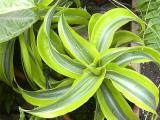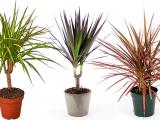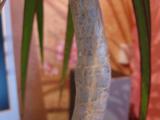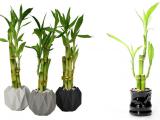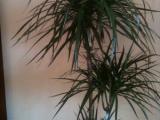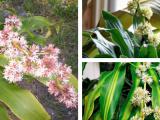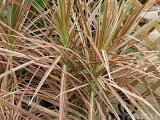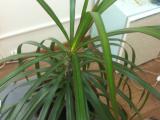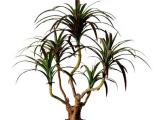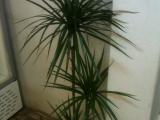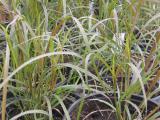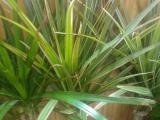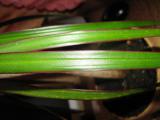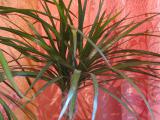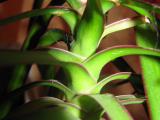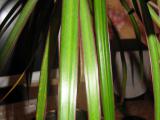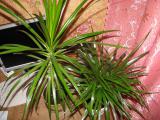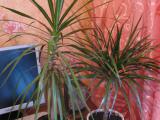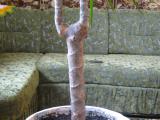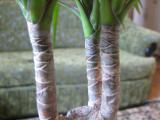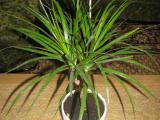It is not difficult to grow some species of dracaena at home, but there are varieties, which in general, you can admire only in the wild. Dracaena Draco (Dragon Tree)...
-
Images of dracaena plant and pictures
Click here to see all articles about Dracaena
Dracaena: How to Plant, Grow and Take Care of Decorative Plants Indoors & Outdoors
Despite the variety of dracaena types, care for dracaena most popular species is approximately the same. In general, dracaena tree is an unpretentious and well-growing indoor plant. It really decorates the house, fitting both into the laconic minimalism, and into the classic interiors. If you take care of dracaena properly, after a while, you can hug your three-meter high tree!
There is one legend about the dracaena tree. It tells how a young guy, in order to get the hand of his beloved, had to take a dry stick and make leaves appear on it. If you decide to decorate your house with dracaena, which is also called the "dragon tree", then you, as in this legend, will have to spend a lot of time and effort to make the bush grow lush and spectacular. However, do not be afraid, because it is enough to know a few tips and secrets for caring for dracaena so that you will succeed.
Among a huge variety of plants that are used for home, offices, apartments, malls and landscape decoration, the dracaena family is the one you can meet practically everywhere. This group of plants enumerates nearly 40 species that vary in sizes and forms.
✔ We Released The Dracaena HandBook
CLICK HERE TO LEARN MORE >>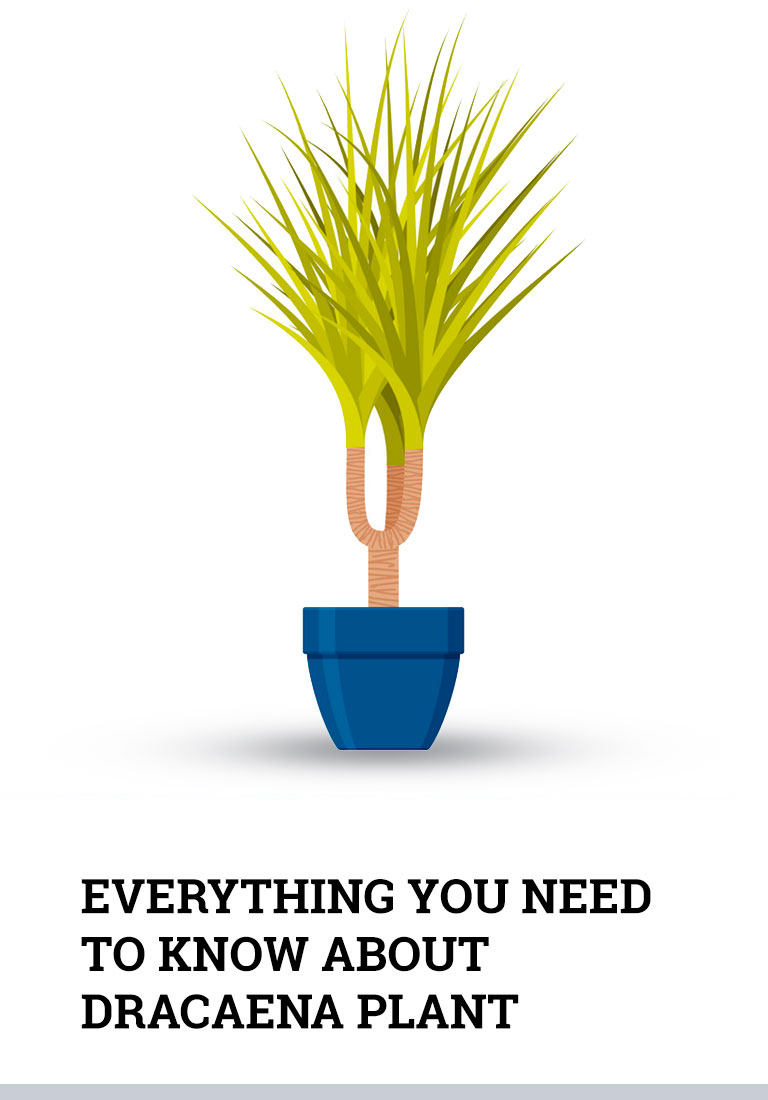
Pin me, please :)Types of Dracaena
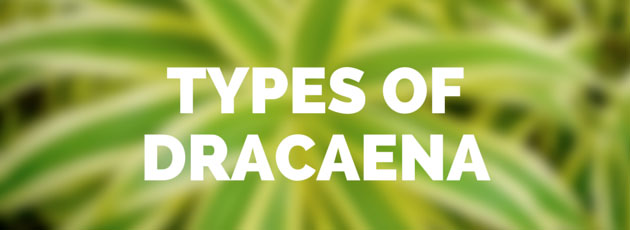
Not all 40 varieties and types of dracaena can be found in garden centers. In most cases, people choose those types of dracaena that grow between 2 and 10 feet. The most common are the most beautiful dracaena types. To the commonest of dracaena types belong:
- Marginata
- Sanderiana
- Reflexa
- Fragrans
- Lemon Lime
- Janet Craig
- Warneckii
- Massangeana
- Compacta
- Deremensis
- Draco (Dragon Tree)
- Cinnabari
Dracaena Marginata
Marginata (the Madagascar dragon-tree or red-edged flower) is a quite thin dracaena tree plant with purplish-red leaves and curving stalks. It grows between 8 and 15 feet tall and has a spread of 3-8 feet. The stem of this dracaena type is smooth, up to two meters high, non-uniform. The Dracaena Marginata plant is widespread, because it is easy to grow at home.
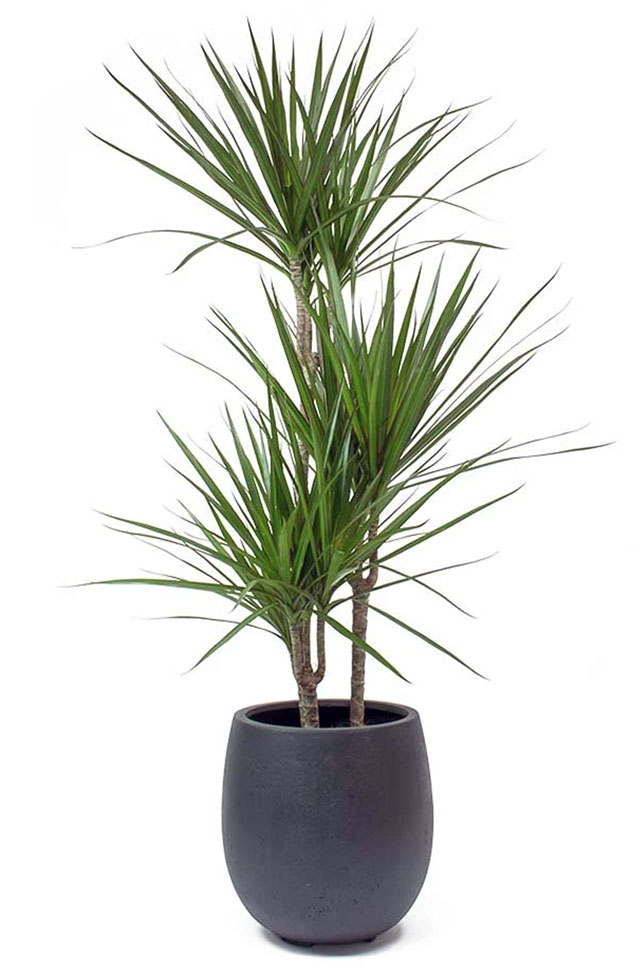
Dracaena Sanderiana
Sanderiana (the lucky bamboo plant) is another dracaena type that is mainly chosen as an office or home plant. Compared to other dracaena types, it requires less care and is rather hardy.
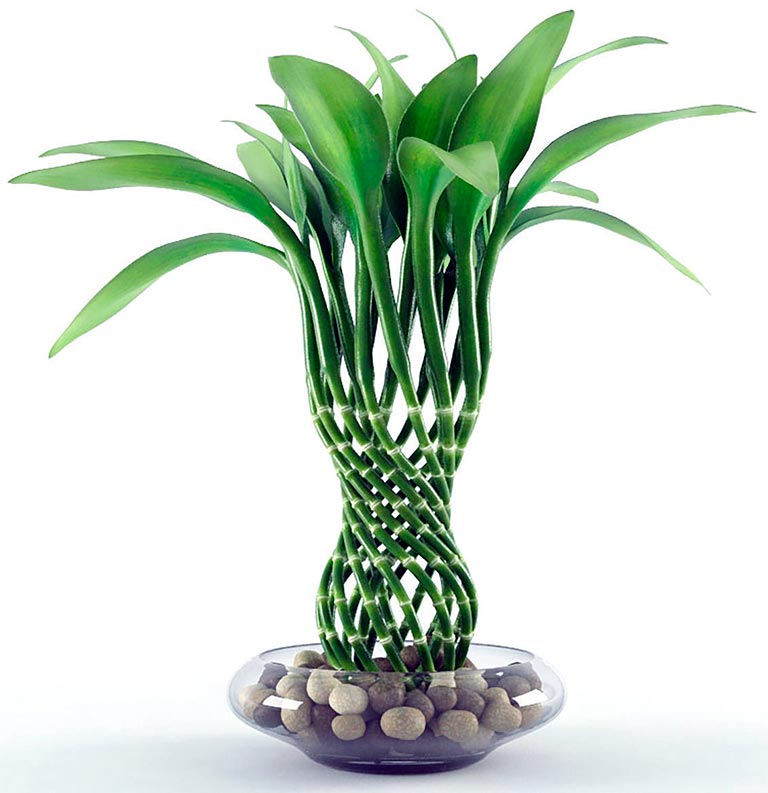
Dracaena Fragrans
Fragrans (the corn plant) grows best in tropical and subtropical climates. The narrow arched foliage of this dracaena tree resembles corn plants, and when the plant grows in the wild, it can reach 40-50 feet. In its natural environment, this dracaena type blooms, emitting a long-lasting pleasant aroma of mown hay.
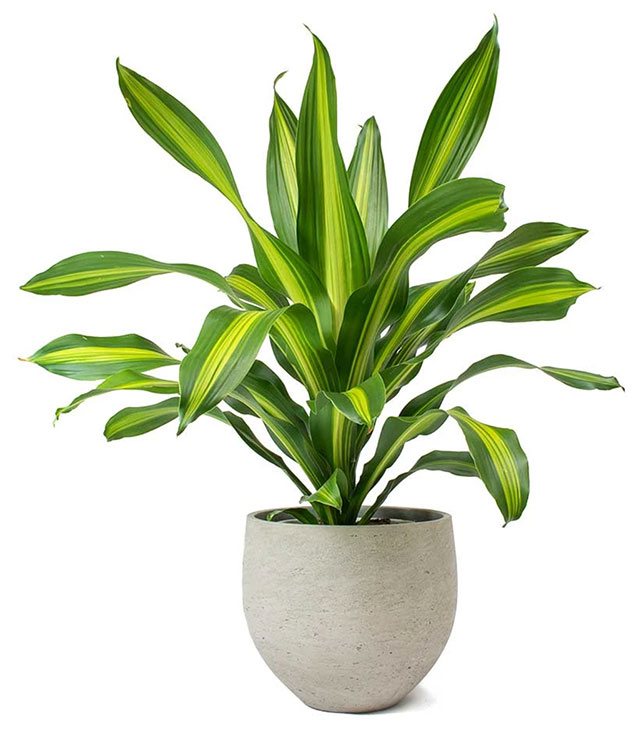
Dracaena Deremensis
Deremensis (the green plant) is characterized by a greater number of cultivars than other specimens. The largest of this dracaena type is Janet Craig (10 feet tall). The most well-known type of Dracaena Deremensis is Warneckii.
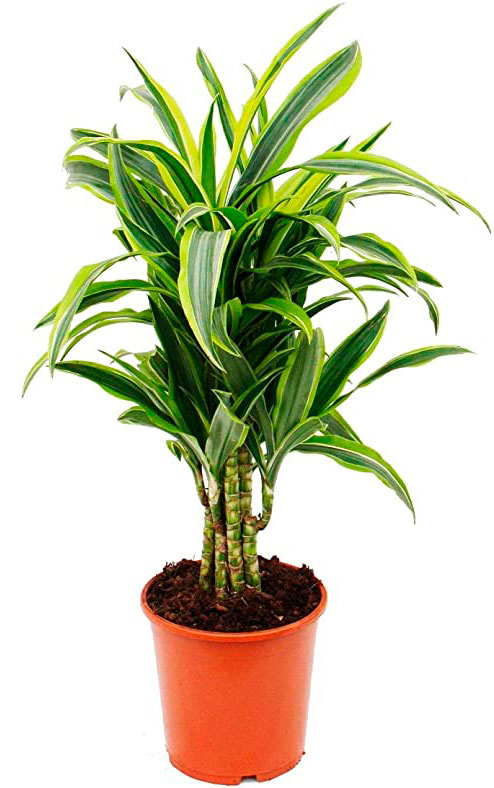
Dracaena Draco
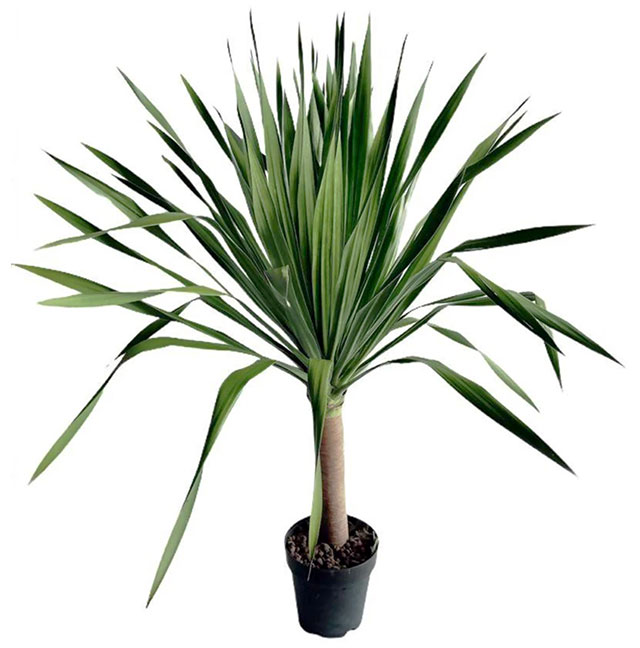
Dracaena Cinnabari
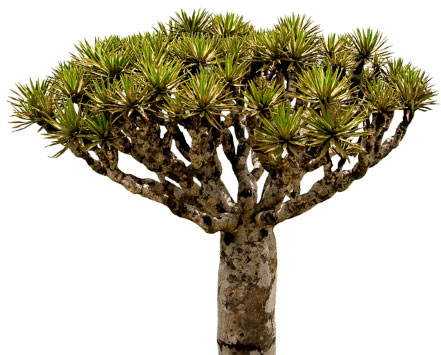
Of course, the description above doesn’t give the full information of dracaena types. Viewing dracaena types images you’ll be able to choose the species you like the most, but remember that pictures can't provide the needed information about dracaena types growing. On this site I also have separate articles on how to take care of each type of dracaena, and there you will find more detailed information, for example, about Dracaena Marginata care, Dracaena Lemon Lime care or Dracaena Deremensis care.
Dracaena Plant Care Guide
Caring for dracaena indoors is quite simple, but the owners of the species of this plant should know a few nuances. Not everyone knows how to care for dracaena houseplant: how to prune a dracaena, when to repot it and what dracaena care instructions to keep. The following essential tips on common different dracaena tree types care are going to be your guide in the process of proper plant growth.
Flowering
: Dracaena is grown as a decorative leafy crop.Size
: Large size.Lighting
. In winter, the plant needs a lot of bright light, and in summer the flower can be placed in a small shade, for example, near the southern or the western window.Temperature conditions
. In the warm season - from 18 to 25°C, and in the winter months it is recommended to remove the plant in a cool place, but the room should not be colder than 12°C.Watering
. During the growing season, watering must be systematic and abundant. It is necessary to water the substrate only after its surface dries out to a depth of 2-3 cm. If you provide the flower with a cool wintering, then it should be watered poorly and less often.Humidity
. The plant must be systematically moistened with a sprayer; you can also periodically arrange a warm shower for it.Fertilizer
. It is necessary to add a solution of complex mineral fertilizer for decorative deciduous plants to the substrate from April to September 2 times a month. In winter, dracaena does not need fertilizers.Rest period
. It starts in October and ends in April. However, the plant enters a dormant state only if it is in a cool room.Repotting
. Dracaena is repotted in spring at the very beginning of the growing season, but only when necessary (on average, once every 2 or 3 years).Propagation
. Dracaena can be propagated by seeds, apical cuttings and stem cuttings.Pests
. The most common pests are thrips, aphids, mealybugs, scale insects and spider mites.Diseases
The plant is susceptible to Alternaria, phyllostictosis, or light brown spotting.
How to Care for Dracaena Indoors.
It is quite easy to grow dracaena indoors because it is an unpretentious plant.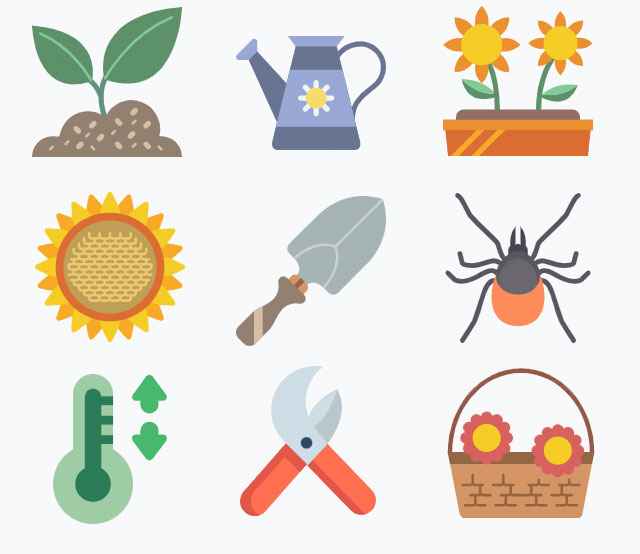
Lighting
The Dracaena plant is quite tolerant of a wide range of conditions. But light plays an important role in dracaena care. It grows best in bright and indirect light. Low light can be for dracaena pretty fine as well, but the plant will grow much slower. Variegated forms prefer light and warmth more than green-leaved varieties and species.
Fertilizer
During the growing season, which begins in April and ends in September, when caring for dracaena you need to feed the plant once every 15 days. Use a granular or liquid complex fertilizer for decorative deciduous plants. In autumn, after the beginning of the dormant period, the plant should not be fed.
Temperature
In summer, the optimum air temperature is from 18 to 25°C. And in winter, it should not drop below 12°C. When the temperature falls below 12°C, the plant will not grow. Sometimes, it even dies.
Humidity
If the surrounding humidity is high, the plant grows well. The humidity can be even increased with the help of pebbles placed below the plant.
Watering
Dracaena must be watered systematically and abundantly while doing this only after the top layer of the substrate dries out 2-3 cm deep. During watering, do not allow moisture to stagnate in the soil, since dracaena reacts extremely negatively to this. Before watering the plant, be sure to carefully loosen the top layer of the substrate. The plant should be watered with well-settled or filtered water.
In summer, dracaena should be watered on average once every two days. If the surface of the substrate has time to dry out to a depth of 2-3 cm faster, then watering should be done more often. Remember that dracaena needs high humidity, for this spray the plant with water in summer, the water temperature should be close to room temperature.
If the plant is in a cool place in winter, then the frequency of watering should be reduced. Nevertheless, if it is located next to a working heating device, then watering and humidification will need to be carried out even more often than in summer. Otherwise, the plant may dry out.
Pruning
Dracaena pruning is combined with its propagation. Proper dracaena care means pruning the plant if it loses its decorative effect. This is due to the fact that some of the species, namely, Dracaena Fragrant and Dracaena Marginata, can reach a height of 2-3 m, with foliage only in the upper part. As a result, the plant loses its attractiveness. To fix this, when caring for dracaena, growers cut off the top of dracaena and root it. At the same time, the part of the plant that remains in the pot continues to grow and leaves appear on it. As a result, you get 2 beautiful plants instead of 1. Such pruning is also a way to propagate dracaena.
You can prune dracaena in two ways:
Cuttings rooting. Stepping back a little from the top of the plant, make a T-shaped incision on the trunk. Place a small amount of moistened peat in the incision and fix a plastic wrap on top. Young roots should appear at the incision site in about 4 weeks. After that, using a very sharp tool, cut off the upper part, slightly stepping down from the new roots. Next, plant the top into a new pot.
Top rooting
. First, you need to prepare a new pot and put a good layer of drainage on the bottom. Then pour the soil into the pot and spill it with settled water. Using a sterilized sharp knife, cut off the upper part of the dracaena along with the trunk from 10 to 15 cm long. Sprinkle the cut area with charcoal powder. Treat the cut at the top with Zircon, then cut off all the lower leaves from it. Plant it in a prepared pot with soil. If there are a lot of upper leaves on the cutting, or they are too large, shorten them by 1/3 part, which will help the plant to form a powerful root system. The part of the stem that remains in the pot without the top should be "covered" with molten paraffin. Continue to look after it in the same way as always, and after a while, the plant will form a young shoot.
Repotting
Repot dracaena only when necessary (about 1 time in 2 or 3 years). The root system of the dracaena is superficial, and therefore a thick layer of drainage must be made at the bottom of the pot so that the water does not stagnate in it. Use a ready-made potting soil, intended for growing palm trees.
If the soil in the pot is not yet depleted, but it is already necessary to repot the plant, do it by putting dracaena with its soil into a new larger pot. Do not forget to make a layer of drainage at the bottom of the pot, and water the repotted plant abundantly.
Repotting may be done when it is most convenient for you, regardless of the season. But spring is the best time for this procedure. Before repotting, a new clay pot should be moistened with freshly boiled water. After that, keep it in water for a short time, which will allow the pores in the clay to open.
Pour the prepared soil into the pot. Remove the shrub from the old pot and place it in the center of the new one. Gently straighten its root system, then fill the container with soil. Do not forget to periodically tap the pot on the floor, this will allow the substrate to lie down well and fill in any voids. After the pot is filled with substrate, its surface should be lightly tamped. Next, water the plant and spray its foliage with water. Move it to a warm and dark place. After repotting, dracaena may get sick, but over time it should take root.
Propagation
Propagation of various forms of dracaena with variegated foliage occurs only vegetatively, or rather, by stem cuttings or by apical cuttings. At the same time, green-leaved species reproduce both vegetatively and by seeds.
How to propagate dracaena with apical cuttings, I described in great detail in the "Pruning" section. If you are afraid to plant the trimmed apical stalk directly into the soil, first place it in a container of water for rooting. And when the roots grow from the cutting, plant it into the soil.
Growing Dracaena from seeds
Instead of cutting dracaena seeds, sow them into the soil and keep the soil moist. No matter what type of dracaena you choose and where you are going to grow it, the seeds will take about 30-40 days to start sprouting. This is why it is recommended to soak them in warm water for about five days to improve germination. Don’t forget to change the water daily. Plants are repotted into a permanent pot only after their height is 5–6 cm.

Cutting Dracaena as an Effective Way of Plants Propagation
In case you have no dracaena seeds to plant, you can easily use cutting to propagate these plants. All you need for propagation is to take six or eight-inch long cuttings of the dracaena you wish to spread and plant the cuttings into pots. About 2/3 of a cutting should be above the soil, which must be kept moist.
As a rule, it takes a few months before one can see the signs of new growth.Take a container with drainage, fill it with a potting mix and then place the plant (cutting) into it
Choose a bright area, but avoid direct light. The area should be warm, as these plants never do well in cold places
Drain the plant with water (distilled, rain, or day-tap)
Right Outdoor Dracaena Growing

Growing this plant outdoors requires special consideration. To begin with, you are to select a proper place. It shouldn’t be too bright or too dark. Areas with filtered light are the most optimal. One more tip: the plant should be placed in soil that drains well.
Dig a hole in the chosen area. It should be twice as large as the plant’s root. The root system should be surrounded by soil in order to spread up quite easily. Stomp down the hole, fill the soil that remained and stomp it down again (this will ensure firmness of the ground).
When caring for dracaena water it not more than two or three times per week during the first 20 days, and then – once per week.
Why Do Dracaena Leaves Die?
Too many people are getting worried about the plant’s leaves: they start turning brown from the tip, and then the entire leaf becomes brown and dies. Pruning dead leaves away, you won’t settle up the problem.
Think of the reasons that led to such results. One of the commonest ones is that leaves were underwatered or overwatered. Always use well-drained soil to avoid problems in the future. Besides, it is important to make sure that the pot is well-drained too.
Essential Tips on Dracaena Care
Proper cultivation takes an important part in plant maintenance. Not everyone knows how to prune a dracaena, when to start transplanting it and what care instructions to keep to. The following tips are going to be your guide in the process of proper plant growing.
Light: this plant is quite tolerant of a wide range of conditions. It grows best in bright and indirect light. Low light can be handled pretty fine as well, but the plant will grow much slower.
Temperature: it should always be warm, regardless of the season outside. When the temperature falls below 65°F, the plant will not grow. Sometimes, it even dies.
Humidity: if the surrounding humidity is high, the plant grows well. The humidity can be even increased with the help of pebbles placed below the plant.
Fertilizers: such needs are pretty simple. In summer and spring you can apply water-soluble house-plant fertilizer two times a month. When it is winter or autumn outside, the fertilizer is not needed.
Fluoride: these plants are very sensitive to it, so exposure to this chemical should be minimized. Fluoride can be found in tap water, that’s why it is essential to use pure and clean water.

Dracaena Diseases and Pests - Potential Problems to Fight
Dracaena can get various pests (mealy bugs, scale, spider mites, etc.) and this is why it is very important to know about natural solutions for them.
Spider mites are sucking insects that cause the leaves to get ragged. To get rid of them, you can spray the plant with insecticides for houseplants. Mealybugs, as well as scale insects, are easily avoided by an insecticide that contains pyrethrin.
When taking care of dracaena, you should know the most common diseases that affect the plant:
Flecking – leaves have yellow and white spots near tips. The disease is treated by maintaining moderate moisture, light conditions, and temperature.
Fluoride toxicity – leaves have dark brown and dead areas with yellow borders. Management: avoid using soil amendments that contain fluoride.
Fusarium leaf spot – reddish spots on young leaves. The plant can be saved with the help of applying iprodione, thiophanate methyl, mancozeb and chlorothalonil.
Soft rot - soft, brown rot and foul odor on rooted cuttings. Management: the only way out is to buy plants without diseases and get rid of those that have them.
Features of Dracaena
Dracaena is a part of the Asparagus family. In indoor culture, the most widespread tree species and varieties of dracaena look very similar to cordylines.
The easiest to care for in indoor conditions are such species as Dracaena Godseffiana, Dracaena Marginata, and also Dracaena Draco. Other types of dracaena are more demanding to care for.
The features of caring for dracaena include the following facts:
Water the plant with care. At the same time, stagnation of moisture in the soil will harm it more than a short drought.
In the summertime, dracaena should be placed in a darkened place near the western or the southern window.
In the warm season, dracaena can be transferred to fresh air (on the terrace or on the balcony), while choosing a place in partial shade.
In spring and summer, the plant should be at a temperature of 18 to 25°C. For wintering, the bush is rearranged to a cooler place (not lower than 12°C).
During the winter months, the plant needs much more bright sunlight than in the summer.
In winter, the air in the room is overdried by working heating devices, so the plant must be regularly moistened from a spray bottle 2 times a day. The plant can also be systematically given a warm shower.
Dracaena is very sensitive to fluoride, so exposure to this chemical should be minimized. Fluoride can be found in tap water, that’s why it is essential to use pure and clean water.
This plant is quite popular in indoor culture because it is very beautiful and is distinguished by its unpretentiousness. Dracaena decorates the interior, both in composition and as a single plant. It can be used to decorate the hotel hall or lobby, winter gardens, offices, large shopping centers, spacious rooms, etc.
FAQs - Top Questions About Dracaena Plants
1. Dracaena leaves become more and more black every day, and it seems that dracaena does not grow at all. I spray the plant every day, wipe the leaves once a week, and water it only when the ground is completely dry.
This happens when dracaena is either in heavy clay soil or light soil, but without humus and peat. It is difficult to water such soil and it dries up.
Change the soil. Repot the plant carefully into lighter soil containing equal parts of turf, leafy soil, peat, and sand.
Perfect soil, by the way, remains black even when dry. You can also buy ready-made soil. Dracaena needs the soil to dry out on top, but make sure that the soil never dries out completely.
2. My friend presented me with a Dracaena Marginata. Should I repot it now, despite the autumn, or let it grow in this soil mixture and a small pot until spring?
If necessary, do not wait for spring to repot dracaena. Give the plant about 2 weeks to acclimate to a new location and repot it as the root system grows (when all of the potting soil is rooted). Dracaena Marginata grows very quickly.
3. Dracaena "got out" from the pot. The soil is loose and it has risen by 3 cm. It turned out that there are already many roots and a thick one sticks out downward and lifts everything. Is this a normal root or not?
This is not the norm. If there is one too large and thick root - this is a sign of improper care, to be more precise - you had to repot the plant into a larger pot a long time ago!
4. Recently I bought a dracaena in a store - it seemed to look healthy. It's been two weeks already. The plant doesn't grow. Dry yellow spots appear on the leaves. The tips of the leaves dry out. I spray the leaves often - this is hardly due to dry air. No parasites are visible.
Similar symptoms occur with a lack of feeding (poor soil or dead roots). Also, some insects that live in the soil could be in a state of larvae, and later they grow. Or, if repotted, then the soil could be infected.
In addition, yellow spots appear on dracaena from too bright sun. And the tips of the leaves become dry from dry air or insufficient watering. And of course, even yellow spots can appear from scale insects. Examine the underside of the leaves carefully.
5. I have a problem - I noticed brown spots on the leaves of dracaena, there are several of them on two leaves. Definitely, it’s not a parasite. The spots are not dry, they are scattered over the leaves. Dracaena lives with me for a year, I have not changed the conditions, it stands from the very beginning in one place, I spray the plant at least 2 times a day. What could it be?
Such spots can appear after the soil dries out (in winter). Aren’t you overdrying your dracaena? The top layer of the soil should dry out between waterings, but all the soil in the pot should not.
6. Dracaena loses its leaves. If at first single leaves fell off, now it’s whole branches. The twigs seem to dry up. The edges of the leaves are not dry, but in the center of some of them, I found large spots.
This is the result of all the symptoms of overwatering. Look at the roots of the plant, if there are healthy areas - cut off all the rot to healthy parts, sprinkle the slices with charcoal. If all the roots are rotten, try rooting the top of dracaena.
7. Help me please, on young dracaena leaves there are pale yellow spots of various shapes: round, irregular, merging as if they had faded, but the leaves were green. There are only on one top of dracaena, on the other two everything is clean.
Probably, it's all about the bright sun, it can be sunburn. Dracaena needs diffused indirect light.
8. Why do dracaena's leaf tips turn black? Is it because of the low air humidity?
The tips of the leaves turn yellow and dry because of dry air, and they turn black most likely from excessive watering, especially if dracaena is located on a cold windowsill. In winter, watering should be done very carefully.
9. I guess it is necessary to form a crown of dracaena, but I do not know how to do it.
You can do the following: cut off the leafy part of the trunk so that 4-5 leaves remain on the "stem". Sprinkle the cut with coal and wait for some time. The stem will give lateral processes, so you can leave the form of them you like.
The top of the plant that was cut off can be rooted directly in the soil under a “hood” (under a jar or plastic bag). And one more important thing: you need to cut off the top so that along with the leaves, the green stem remains on the "stump".
10. The lower leaves of the dracaena began to dry, then normal green leaves began to fall off, now both tops are completely naked, how should I care for dracaena to save it?
Most often, dracaena turns yellow due to waterlogging of the soil, especially if the pot is too spacious, then the soil dries for a long time. There is no need to wait until all the leaves turn yellow, while the tops are still green - they need to be cut and rooted in water. You can add charcoal to the water.
Another reason for yellowing of leaves in dracaena can be caused by heat and dry air, the plant is bad in winter during the heating season or in hot summer, with insufficient watering and drying out of the soil.
11. In Dracaena Fragrans, the lower leaves are bright green with yellow stripes, and the upper leaves are more uniform, the stripes are smoothed. Why is this happening?
If everything else in the plant is ok, then the reason might be the lack of sunlight. All variegated dracaena turn pale when it is dark. It's easy to check - just move your dracaena to a brighter place.
12. My dracaena doesn't look very attractive. How to help a plant to return its beauty? What can I do with crooked branches, and how can I help increase the number of leaves to make dracaena look more luxurious?
Curved branches are the result of stretching towards the sun. Place your dracaena so that the deviation is towards the room, and do not forget to regularly turn the pot towards the sun for the symmetry of the plant. At the bottom of the trunk, new leaves will no longer grow, but one crown can be cut off lower, it will begin new growth. Root the cut off crown and plant it in the same pot. You will have multi-layered greens.
If your dracaena does not suffer from a lack of light, then perhaps the plant grows too intensively and does not have enough nutrition. Usually, the ready-made soil is depleted after 1.5-2 months and you have to feed the plant after that. It is recommended to repot dracaena in fresh and appropriate soil every year. In the summer, keep your dracaena on the balcony, but not in direct sunlight, spray it often (early morning and evening). Shower the plant once a week. All this is good dracaena care. Under these conditions, the leaves will be thick and strong.
13. Dracaena looks great, the only thing is that the roots are crawling out at the bottom of the pot, so the question is - should I repot it or not?
The roots going out of the pot from the drainage holes is not always a sign of the need for repotting: if dracaena is strongly dried between waterings, and watered abundantly, then the roots naturally grow mainly downward, in search of water. There may be few roots inside the pot. If dracaena is watered poorly and often, this does not happen. Therefore, take into account the size of the pot and the time from the last repotting. If about a year has passed, you can safely repot the plant. When doing this, pay attention to how many roots there are in the pot. If they did not occupy the entire space of the pot, then simply replace the soil with fresh soil and plant dracaena in the same pot.
14. In which pot is it better to plant Dracaena: ceramic or plastic? Several people guarantee me that I should not plant in ceramics! Everyone who planted dracaena in ceramics did not succeed. Is it true?
The pot material does not play a significant role for the roots of dracaena. Ceramic pots can be beautiful, but they are heavy. Choose the pots only with a wide bottom - it is more stable. A plastic pot may be better because it is easier to make drainage holes in it. In general, drainage is needed in any pot, and there should be many drainage holes.
✔ We Released The Dracaena HandBook
CLICK HERE TO LEARN MORE >>THE INFOGRAPHIC THAT SHOWS YOU EXACTLY HOW TO TAKE CARE OF YOUR DRACAENA

This infographic was made by Tipsplants team.
About the Author
My name is Michael Bauer,
I have been growing and taking care of plants for 20 years. My dream has become a reality. I've had many difficulties along the way, but my love for our favorite plants has really helped me.
So join us!



Southeast Africa is considered the birthplace of Dracaena Lisa Cane, and it is one of the most enduring varieties of...
Snake Plant, often called Sansevieria or Dracaena Trifasciata, is easy to care for. The plant came to homes of flower growers...
Dracaena Deremensis is one of the most popular and unpretentious plants. This stately beauty has high decorative properties. Dracaena Deremensis has tricolored...
Most species of dracaena are by no means room-sized, which makes it difficult to keep them at home. However, there are also those that are able to fit on an ordinary windowsill....
Dracaena Massangeana is an evergreen deciduous plant. A characteristic feature of this dracaena variety is the presence of a ligneous trunk formed by the gradual fall of the lower...
Dracaena Warneckii is a type of Dracaena Fragrans (Corn Plant), an unpretentious perennial plant...
There are more than 100 dracaena species. Dracaena Deremensis and Dracaena Fragrans (Corn Plant) are most often...
Dracaena Lemon Lime is the plant of the asparagus family. Outwardly, it distantly resembles a palm tree due to the location and shape of the leaves, but these...
Dracaena Fragrans (also known as dracaena corn plant) is an evergreen ornamental deciduous plant with a long, sometimes branched stem. Under...
The bare trunk and leaves in bunches growing only at the ends of the shoot make it possible to identify Dracaena Reflexa, like all other...
Dracaena Marginata is a tree species of the Asparagaceae family. In its historical homeland, the island of Madagascar, it grows 3-5 meters in height.
In...
Recently my friend made an overhaul in his flat and it turned into a modern and comfortable place. He was really glad but felt that something was missing. The flat looked big and...
The iconic plant Dracaena Sanderiana, also referred to as "Lucky Bamboo", has nothing to do with bamboo, except for its appearance. It is very...
Dracaena is one of the prettiest indoor plants which comprises approximately 40 species of trees and succulent shrubs. In the APG III classification system (Angiosperm Phylogeny...
Recently I’ve decided to buy some flower. Having entered the flower-shop I was attracted by dracaena. It was so tiny and so beautiful that I’ve bought it at once. The salesman told...
Dracaena is a beautiful plant. That’s why you can see it almost in every house. It can be either a shrub or a tree. I have had dracaena for like 9 years, but for the first 7 years...
I have had Dracaena Colorama almost forever. Not to confuse you with the terms, which I’ve found in various books, I’ll explain what kind of dracaena it is in my own words. It has...
It’s a very important day for me. Today I’m going to be busy with dracaena transplanting. I have examined a lot of different books and...
My mother presented me a dracaena on cane for my last birthday. I was surprised, because I didn’t expect to receive such a beautiful thing. I love flowers very much, and my family...
All my relatives and friends say I’m crazy about plants. My nice garden and all rooms in my house definitely confirm this fact. It’s my hobby, my affection. But how amazed I was...
Being a great fan of travelling I like to watch TV programs about other continents, where narrators tell about different places overseas and wild nature. Once there was a program...
I know dracaena is a frequent choice for those who are fond of plants. As I belong to one of those amateur gardeners I was interested in buying something new for my garden (it was...
I am craving for your advice. I have my Dracaena Tricolour for 6 months. In the shop they said this plant needed some shade. I put it in a deep niche we have near the window. I...
I have never been a dracaena fan, just before I was introduced to a beautiful Dracaena Fragrans at one of my colleagues’ home. Now I know this plant is called “a Plant of Happiness...
Last year I bought my first dracaena (indivisa). I bought it as a small tree in May. It spent the end of spring and the whole summer in our back garden. From the beginning I put...
I want to tell you how I have grown Indivisa Dracaena (sometimes you can find it is called “Spikes”).
✔ We Released The...
I have had my Acaulis for 2 years. She got about 4.5” by now, which is too much for my 5” ceiling. I heard that it is almost impossible to cut dracaenas at home and have new...
My Dracaena Deremensis started showing the smallest dots on leaves near the body. I was puzzled. Why is my dracaena dying? As when I purchased it, it was fine! I have a small...
At my place dracaena grows as an ornamental plant. I have dracaena annual or perennial species. The difference between them is not great: seasonal plants are to be planted every...
‘It depends’ is the only answer I can give. Lots of things really depend on the plant's size and its kind. Of courses, at times it is really hard to figure out how much fertilizer...
I’d like to share my experience about dracaena growing. I bought this plant two years ago. Now I’m happy to say that it is a real...
I like to take care of dracaena plants I have at home. I have several species and must say that at first it was rather hard to remember...
We all are used to pronouncing ‘dracaena’ like druh-SEE-nuh, but some of my friends refer to it as to ‘spikes’. Dracaena spike is my favorite plant that is tropical by nature, but...
When I faced the problem of brown dracaena leaves, I though there was no treatment to save my favorite plant. Fortunately, I was wrong....
You’ve probably noticed that in spring and summer dracaena plants are growing rather actively, and knowing how to trim dracaena you ensure its beauty. My friends, who adore these...
This question bothers too many people. To tell the truth, not so long ago I was one of them. As for now, I can give a few tips.
If you have these beautiful plants at home,...
Well, I wouldn’t be so sure. I have many different plants at home and should say that dracaena draco and medusa are the two species I’ve never had REALLY great problems with. The...
My granny is a real fan of exotic plants. She adores succulents and growers with big fantastic flowers. Of course, she spends much time on planting, trimming, transplanting,...
I’m really frightened and worried about my cat Lucia and dog Sawty. I have learnt that dracaena plant is extremely dangerous for pets...















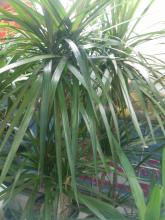 ,
, 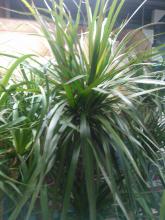 ,
, 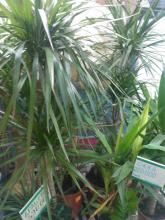 ,
, 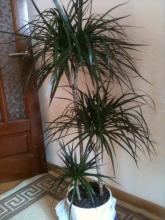 ,
, 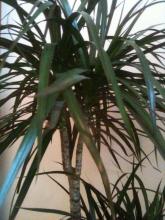 ,
, 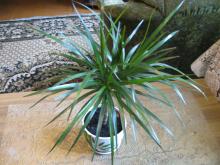 ,
, 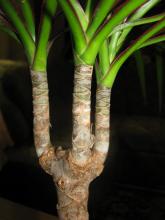 ,
, 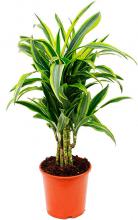 ,
, 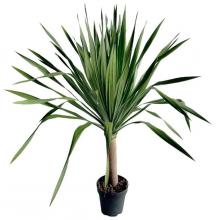 ,
, 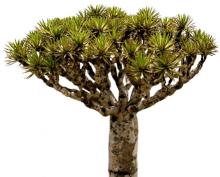 ,
,  ,
, 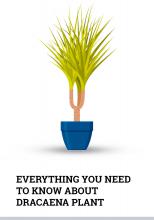 ,
, 










